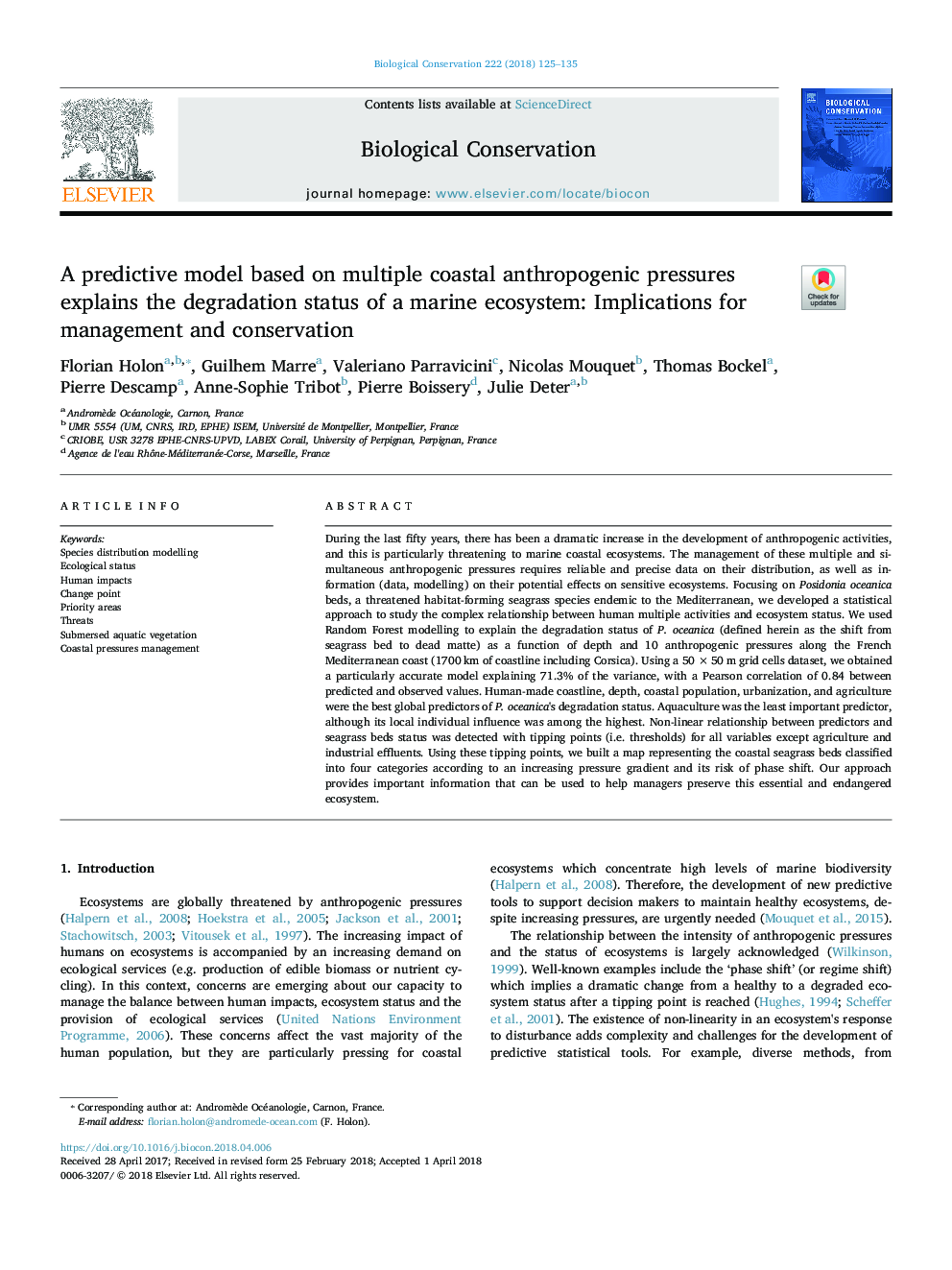| کد مقاله | کد نشریه | سال انتشار | مقاله انگلیسی | نسخه تمام متن |
|---|---|---|---|---|
| 8847263 | 1617883 | 2018 | 11 صفحه PDF | دانلود رایگان |
عنوان انگلیسی مقاله ISI
A predictive model based on multiple coastal anthropogenic pressures explains the degradation status of a marine ecosystem: Implications for management and conservation
ترجمه فارسی عنوان
یک مدل پیش بینی شده بر اساس فشارهای آلودگی چند ساحلی، وضعیت تخریب یک اکوسیستم دریایی را توضیح می دهد: پیامدهای مدیریت و حفاظت
دانلود مقاله + سفارش ترجمه
دانلود مقاله ISI انگلیسی
رایگان برای ایرانیان
کلمات کلیدی
مدل سازی توزیع گونه، وضعیت زیستشناختی، تاثیرات انسانی، تغییر نقطه، مناطق اولویتی، تهدیدات پوشش گیاهی آب های زیرزمینی، مدیریت فشار ساحلی،
موضوعات مرتبط
علوم زیستی و بیوفناوری
علوم کشاورزی و بیولوژیک
بوم شناسی، تکامل، رفتار و سامانه شناسی
چکیده انگلیسی
During the last fifty years, there has been a dramatic increase in the development of anthropogenic activities, and this is particularly threatening to marine coastal ecosystems. The management of these multiple and simultaneous anthropogenic pressures requires reliable and precise data on their distribution, as well as information (data, modelling) on their potential effects on sensitive ecosystems. Focusing on Posidonia oceanica beds, a threatened habitat-forming seagrass species endemic to the Mediterranean, we developed a statistical approach to study the complex relationship between human multiple activities and ecosystem status. We used Random Forest modelling to explain the degradation status of P. oceanica (defined herein as the shift from seagrass bed to dead matte) as a function of depth and 10 anthropogenic pressures along the French Mediterranean coast (1700â¯km of coastline including Corsica). Using a 50â¯Ãâ¯50â¯m grid cells dataset, we obtained a particularly accurate model explaining 71.3% of the variance, with a Pearson correlation of 0.84 between predicted and observed values. Human-made coastline, depth, coastal population, urbanization, and agriculture were the best global predictors of P. oceanica's degradation status. Aquaculture was the least important predictor, although its local individual influence was among the highest. Non-linear relationship between predictors and seagrass beds status was detected with tipping points (i.e. thresholds) for all variables except agriculture and industrial effluents. Using these tipping points, we built a map representing the coastal seagrass beds classified into four categories according to an increasing pressure gradient and its risk of phase shift. Our approach provides important information that can be used to help managers preserve this essential and endangered ecosystem.
ناشر
Database: Elsevier - ScienceDirect (ساینس دایرکت)
Journal: Biological Conservation - Volume 222, June 2018, Pages 125-135
Journal: Biological Conservation - Volume 222, June 2018, Pages 125-135
نویسندگان
Florian Holon, Guilhem Marre, Valeriano Parravicini, Nicolas Mouquet, Thomas Bockel, Pierre Descamp, Anne-Sophie Tribot, Pierre Boissery, Julie Deter,
